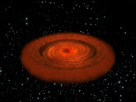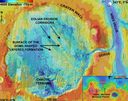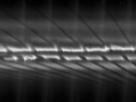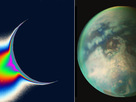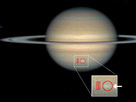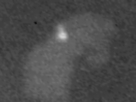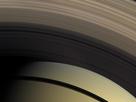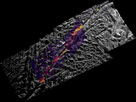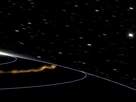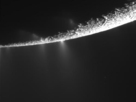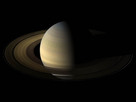The operating space science missions
The microwave sky as seen by Planck
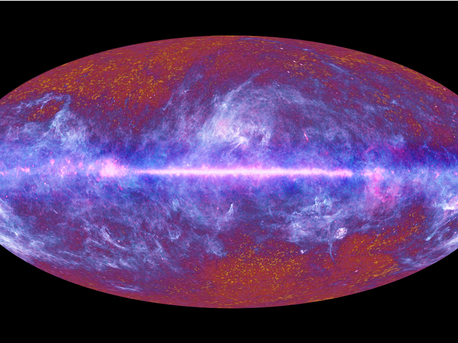 © ESA/ LFI & HFI Consortia
|
This multi-frequency all-sky image of the microwave sky has been composed using data from Planck covering the electromagnetic spectrum from 30 GHz to 857 GHz. The mottled structure of the CMBR, with its tiny temperature fluctuations reflecting the primordial density variations from which today’s cosmic structure originated, is clearly visible in the high-latitude regions of the map. The central band is the plane of our Galaxy. A large portion of the image is dominated by the diffuse emission from its gas and dust. The image was derived from data collected by Planck during its first all-sky survey and comes from observations taken between August 2009 and June 2010. This image is a low- resolution version of the full data set. To the right of the main image, below the plane of the Galaxy, is a large cloud of gas in our Galaxy. The obvious arc of light surrounding it is Barnard’s Loop – the expanding bubble of an exploded star. Planck has seen whole other galaxies. The great spiral galaxy in Andromeda, 2.2 million light-years from Earth, appears as a sliver of microwave light, released by the coldest dust in its giant body. Other, more distant, galaxies with supermassive black holes appear as single points of microwaves dotting the image. Planck was built for ESA by the Prime Contractor Thales Alenia Space (Cannes, France) with contributions from space industry drawn from ESA’s 18 Member States. Because of differing accounting procedures in the many bodies contributing, precise costings are impossible to give. However, the overall cost to ESA and its Member State institutions as well as cooperating agencies world- wide (including NASA and Canadian Space Agency) in round figures is 600M€
“It is not an easy time to make such commitments but we should not doubt the wisdom of the SPC in squeezing even more return from the big investments of the past,” says David Southwood, ESA’s Director of Science and Robotic Exploration. “The highest quality science will continue to flow from this armada of spacecraft. It is a good day for European space science. Europe will continue to play an important part in unlocking the mysteries of our Universe.”
Source: ESA
The operating space science missions
The microwave sky as seen by Planck
 © ESA/ LFI & HFI Consortia
|
This multi-frequency all-sky image of the microwave sky has been composed using data from Planck covering the electromagnetic spectrum from 30 GHz to 857 GHz. The mottled structure of the CMBR, with its tiny temperature fluctuations reflecting the primordial density variations from which today’s cosmic structure originated, is clearly visible in the high-latitude regions of the map. The central band is the plane of our Galaxy. A large portion of the image is dominated by the diffuse emission from its gas and dust. The image was derived from data collected by Planck during its first all-sky survey and comes from observations taken between August 2009 and June 2010. This image is a low- resolution version of the full data set. To the right of the main image, below the plane of the Galaxy, is a large cloud of gas in our Galaxy. The obvious arc of light surrounding it is Barnard’s Loop – the expanding bubble of an exploded star. Planck has seen whole other galaxies. The great spiral galaxy in Andromeda, 2.2 million light-years from Earth, appears as a sliver of microwave light, released by the coldest dust in its giant body. Other, more distant, galaxies with supermassive black holes appear as single points of microwaves dotting the image. Planck was built for ESA by the Prime Contractor Thales Alenia Space (Cannes, France) with contributions from space industry drawn from ESA’s 18 Member States. Because of differing accounting procedures in the many bodies contributing, precise costings are impossible to give. However, the overall cost to ESA and its Member State institutions as well as cooperating agencies world- wide (including NASA and Canadian Space Agency) in round figures is 600M€
“It is not an easy time to make such commitments but we should not doubt the wisdom of the SPC in squeezing even more return from the big investments of the past,” says David Southwood, ESA’s Director of Science and Robotic Exploration. “The highest quality science will continue to flow from this armada of spacecraft. It is a good day for European space science. Europe will continue to play an important part in unlocking the mysteries of our Universe.”
Source: ESA





